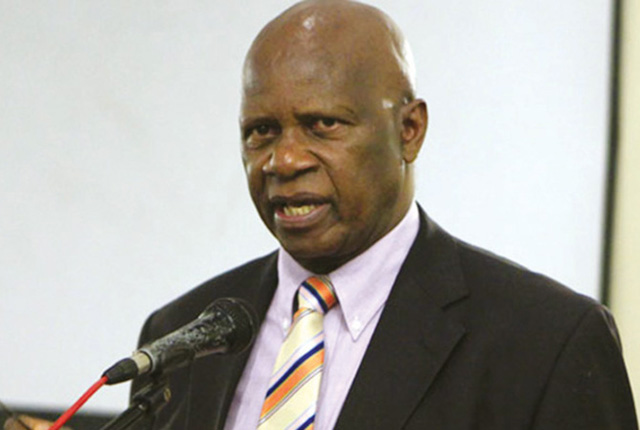‘Agribank must reduce costs to revenue ratio’

Business Reporter
GOVERNMENT says the Agriculture Development Bank should reduce ratio of costs to revenue to 30 percent, after aggressive cost containment helped the State-owned bank to $4,7 million after profit in 2016 from a loss of $3 million the prior year.
The staff cost to revenue ratio of 30 percent is in line with the directive issued by Government recently that State entities should spend less on staff costs and more on service delivery.
In further demonstration of the sustainability of the profitability trajectory the bank is now following, after tax profit ran ahead of budget at $1,8 million for the first five months to May 31, 2017, against management’s budgeted target of $463 203.
The bank’s profitability was driven by interest income of $753 000 from capitalisation Treasury Bills they were given by Government earlier in the year. Finance and Economic Development Minister Patrick Chinamasa said at 36 percent of revenue, the agriculture bank had done well to contain costs, but added it should maintain the level although he personally preferred a further to 30 percent.
Apart from cutting costs, he said he had discussed with the bank management about need to whittle down the rate of non-performing loans from 14 to 5 percent.
“We discussed staff costs, which are at 36 percent and it is very good. They should maintain this level and remain cautious. The bank must maintain expenditure so that the ratio of staff expenditure to revenue is around 30 percent,” the finance minister said.
Agribank’s staff costs to income ratio was 36 percent against a target of 27 percent during the financial year to December 2017. The cost to income ratio stood at 78 percent as at December 31, 2017 compared to an industry average of 89 percent.
Minister Chinamasa said management had made a commitment to bring the ratio further down. Chief executive Sam Malaba said aggressive cost containment helped the bank return to profitability riding on initiatives that ensued fresh capital injection.
Minister Chinamasa said the agro-focused financial institution was given $30 million in May 2015 and another $10 million in December 2016, which helped strengthen the bank’s balance and turnaround programme, which was now bearing fruits. “Aggressive and sustained cost control also helped the bank achieve profitability. Cost containment in the bank is continuing and procurement is limited to critical items,” he said.
The minister also said he discussed the issue of non-performing loans held by the bank and was happy to note an appreciable reduction in the proportion of the bank’s NPLs, which have come down from 20 percent in December to 14 percent now. “We are urging them to proceed on the path to reducing the non performing loans to 5 percent, which is the Reserve Bank of Zimbabwe guideline,” the minister said.
During the period under review, Agribank’s total assets increased from $203 million for the period under review to $221 million in May 2017, an 8,41 percent growth.
The minister said Government wanted Agribank to concentrate on lending to farmers and agriculture related activities with the being now on sound footing after being capitalised.
Speaking after the bank’s annual general meeting in Harare on Monday Minister Chinamasa said Government had been extending funding for capitalization of the bank since 2015 in a demonstration of the importance it attached to the agriculture.
“At the AGM, we also discussed the composition of the loan book. Government wants their resources to be lent to farmers. In the lending mix, the greater proportion should go to farmers or to agriculture related activities. The mandate of the bank is to lend to agriculture and related activities,” the finance minister said.











Comments